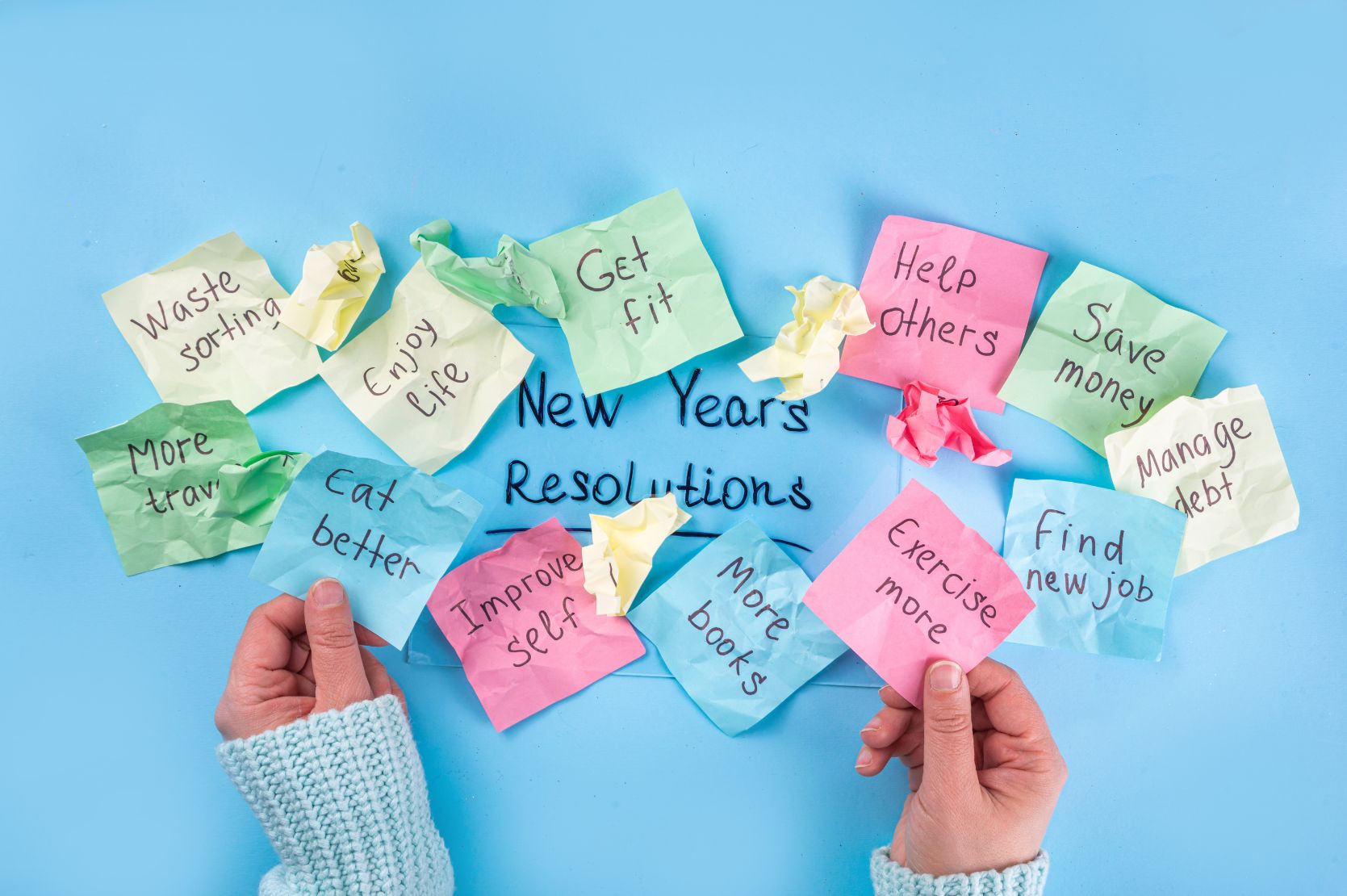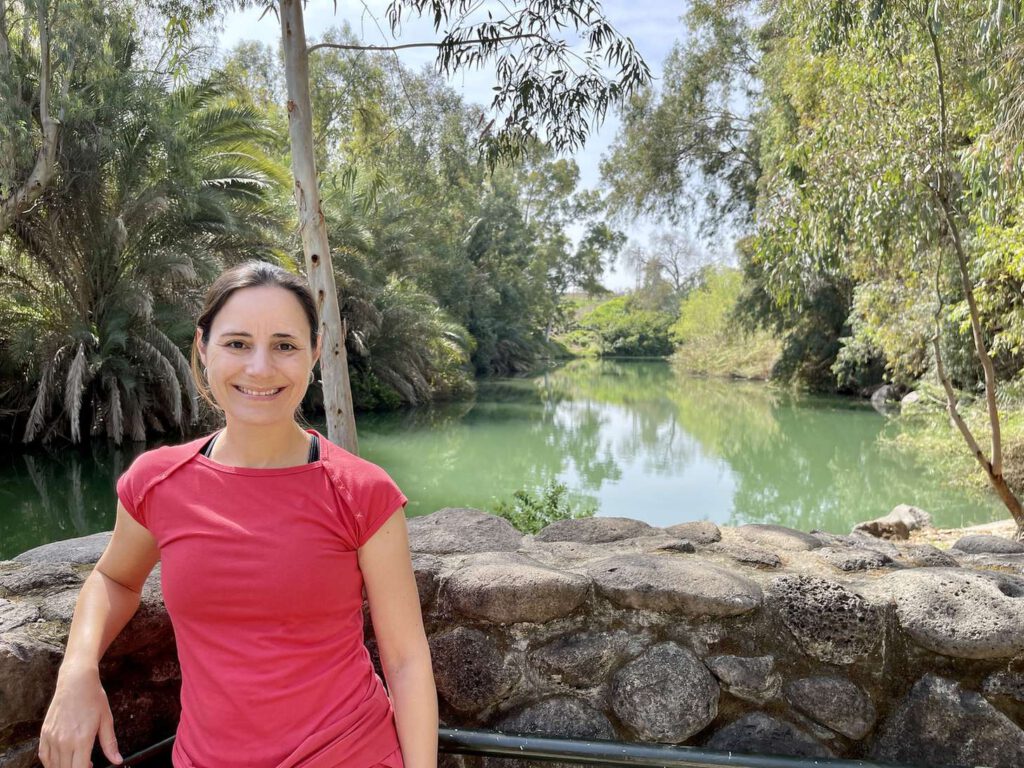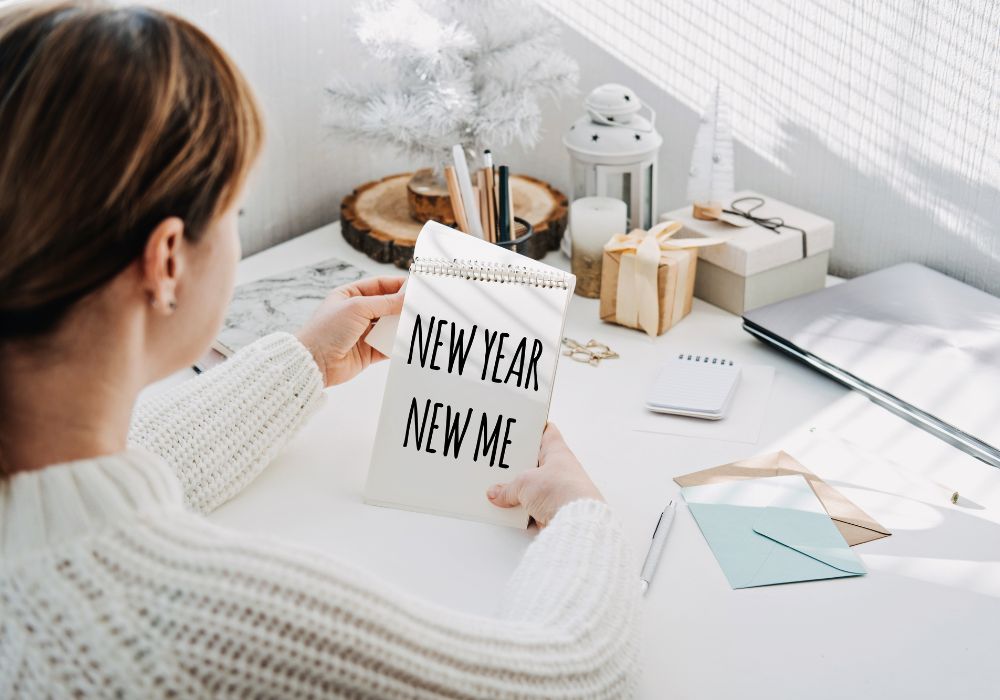
Realistic New Year’s goals with fibromyalgia
Why classic New Year’s resolutions often fail
Author: Kerstin Goldstein
Last updated: 28. September 2025
As the end of the year approaches, people everywhere are talking about setting themselves new goals: getting fitter, eating healthier, being more productive.
But if you live with fibromyalgia, these New Year’s resolutions can often bring more frustration than joy. Why is that, and how can we better approach our goals with a chronic condition?
In this article, I share tips and tricks with you on how you can make your next resolutions fibro-friendly.
Why classic New Year’s resolutions often fail
New Year’s resolutions often have one thing in common: they are unrealistic. Many people set themselves goals that seem big and ambitious – such as exercising every day or losing 10 kilos in three months. For people with fibromyalgia, however, goals can quickly become overwhelming. Symptoms such as pain, exhaustion and concentration problems are often unpredictable and make it difficult to stick to rigid plans.
In addition, failed resolutions often trigger feelings of guilt or self-doubt. This “all-or-nothing thinking” – either I achieve my goal perfectly or I have failed completely – is particularly counterproductive in the case of chronic illnesses.
Small steps, big impact
Especially with fibromyalgia, it’s important to think in small steps. It’s not about changing your life in one day, but about developing long-term habits, such as a new morning routine.
Celebrate small successes: If you still managed to take a short walk on a difficult day or motivate yourself to meditate for 5 minutes, that’s a big step in the right direction.
It is important that you consciously recognize and acknowledge your progress. Record these small successes in writing, for example in a diary. This allows you to see what you have already achieved, even on less good days. Small steps are like building blocks: they create a solid foundation on which you can continue to build. Setbacks are also part of this, as they offer you the chance to learn from experience and better adapt your goals to your needs.
Another advantage of small steps is that they create less pressure. For example, if you only plan 5 minutes for a particular activity a day, you are less inhibited to start at all. And sometimes you realize that those 5 minutes suddenly turn into 10 or even 15 because you feel good. This flexibility is crucial for dealing with the challenges of a chronic illness.
Small steps also make it possible to pursue several mini-goals at the same time. For example, you could do 5 minutes of breathing exercises on one day and 10 minutes of light exercise on another. This variety can help to keep your motivation high without overwhelming you.
Mail from the Wellness Oasis
Receive valuable tips, exercises, and inspiration about fibromyalgia directly in your inbox. Sign up now and stay motivated on your journey to more ease and well-being!

Set goals differently: SMART instead of rigid
Instead of formulating big resolutions that overwhelm you, you can use the SMART method as a guide. Goals should be Specific, Measurable, Achievable, Relevant and Time-bound. What does this mean for your New Year’s goals with fibromyalgia?
Examples of realistic New Year’s goals
Here are a few ideas that are especially suitable for people with fibromyalgia:
Plan more breaks:
Gentle movement:
Practicing mindfulness:
Adapt your diet:

Finding the right focus: Setting priorities for New Year’s goals
A common mistake when setting goals is to want to achieve too many things at the same time. With fibromyalgia in particular, it is important to set priorities.
Ask yourself: What is most important to me right now? Do I want to have more energy, reduce my pain or improve my mobility? Do I want to focus on my gluten-free diet or change my office routine? If you know what brings you the greatest relief at the moment, you can work on it specifically.
A helpful approach is to choose one or two main goals and pursue them consistently. For example: “I will focus on doing a relaxation exercise every evening for the next two months”. Or: “I plan to do gentle movement exercises twice a week to relieve my pain”. With clear priorities, it’s easier to stay focused without getting bogged down.
Podcast interview on the topic of New Year’s goals in the Fibromyalgia Podcast
At the turn of the year, I gave an interview in the Fibromyalgia Podcast on the topic of ‘setting goals’. How do you set realistic goals when you have a chronic illness such as fibromyalgia?
Listen in and get all my tips … plus learn more about my own story with fibromyalgia.
Together instead of alone: seeking support
Achieving goals, no matter how small they may seem, is often easier if you have support. With fibromyalgia, sharing experiences with other people who are in the same situation can be particularly valuable. In self-help groups, whether online or locally, you can find people who are experiencing similar challenges. Together, you can share tips and experiences and get motivation and understanding.
Friends or family members can also play an important role. Ask them to support you with small steps. For example, they could teach you how to cook a gluten-free meal or remind you to take breaks. Getting active together – whether it’s a short walk or meditation – not only strengthens the body, but also the interpersonal connection.
However, sometimes you need an experienced coach to provide you with targeted support. A coach can help you set realistic goals, give you strategies for overcoming setbacks and provide guidance when you feel overwhelmed. With professional support, it’s often easier to stay on track and see progress.
Be kind to yourself
The most important thing when setting goals is that you treat yourself with love and kindness. Fibromyalgia means that your body and mind are often pushed to their limits. Instead of putting even more pressure on yourself, you should pay attention to how you feel and adjust your goals flexibly. Sometimes just stopping and being proud of what you achieve despite the challenges is a success in itself.
Conclusion: Small goals – big results
New Year’s goals can be useful with fibromyalgia – if they are realistic and flexible. Use the turn of the year to set yourself small, achievable goals that will strengthen your well-being instead of overwhelm you. Remember: every small step counts. And above all – be patient with yourself. You’re doing great!
👉 Book your free initial consultation now. Together we will find your way to more lightness and joie de vivre!
Du suchst nach neuen Wegen im Umgang mit Fibromyalgie?
Ich unterstütze dich Schritt für Schritt – damit du wieder das tun kannst, was du gerne möchtest.
